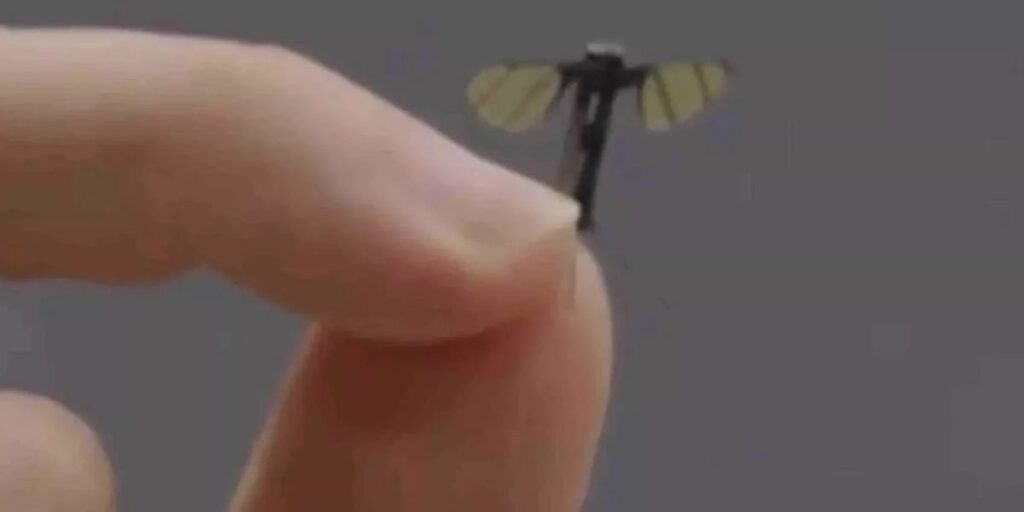Last month, China’s National University of Defense Technology unveiled a new spy drone designed to look like a mosquito.
Showcased on the state-run CCTV-7 military broadcaster, the micro-drone appeared to be roughly the size of a human fingernail and featured tiny, leaf-like wings and thin, wiry legs.
While it may not look as impressive as some of the bigger unmanned systems coming out of Ukraine, its stick-thin body is said to be equipped for a range of covert surveillance and military operations.
“As a drone to surveil buildings, especially on the inside, I can imagine it being quite useful for video feeds,” Herb Lin, a senior research scholar at Stanford’s Center for International Security and Cooperation, told Business Insider.
But its small size may limit its uses on the battlefield.
“If it’s real, and powered conventionally (with a battery), its longevity in the air will be limited by battery capacity,” Lin said. “Also, it’s very light, and therefore easily buffeted by winds. These factors suggest it isn’t particularly useful for wide-area surveillance.”
Drones can be highly sensitive to weather, in particular strong winds, rain, snow, cold weather, and fog.
And the smaller an aerial drone is, the more susceptible it is to such conditions, Samuel Bendett, an advisor with the Center for Naval Analyses and drone expert, said. “Even indoors, there can be conditions that could interfere with this drones’ performance, such as even a slight breeze, an air flow from an AC, an open window, or other obstacles.”
Communications are another issue to consider, Bendett continued, as the drone’s size means it’s unlikely to be able to carry much advanced equipment.
“While it is technically possible to build a tiny UAV like the one displayed by the Chinese developers, its actual performance is likely to greatly vary,” he said.
Others say that the new drone is a sign of China’s continuing innovation in the sector.
Michael Horowitz, a senior fellow for technology and innovation at the Council on Foreign Relations, said it showed “Chinese researchers in particular want to push forward technological innovation in drones.”
It remains unclear how real the capability is, how soon China could field the tech, or the type of missions it could use them for, he added.
Read the full article here


